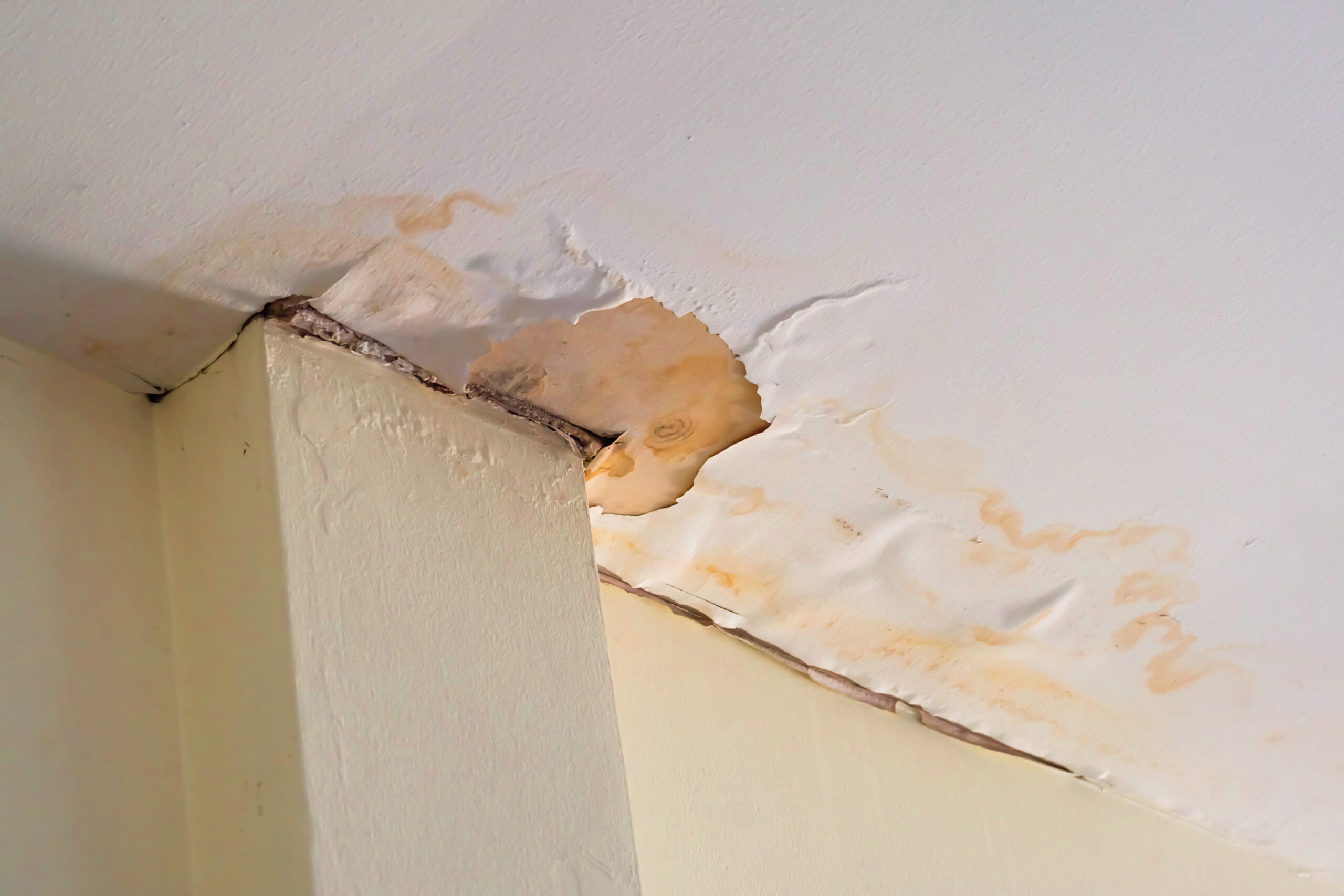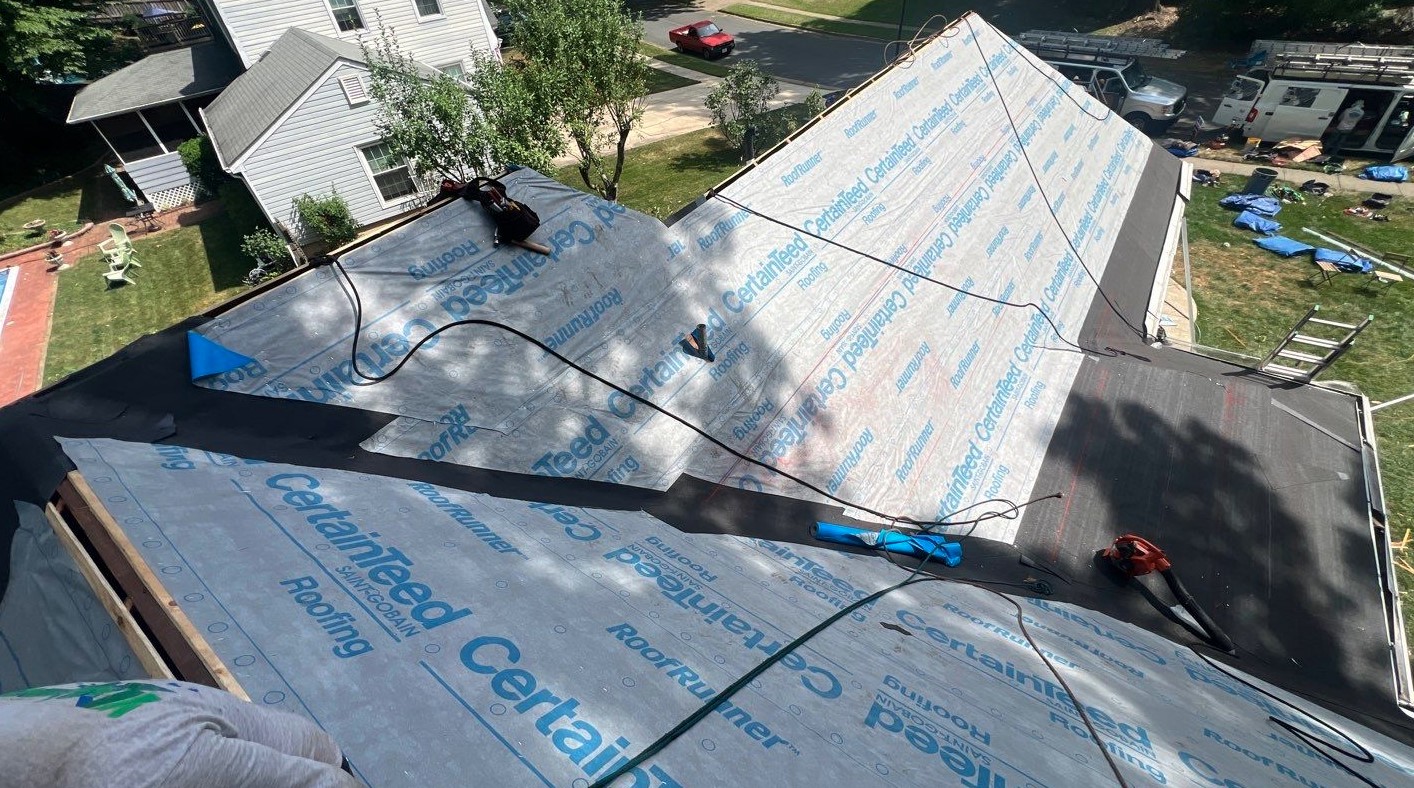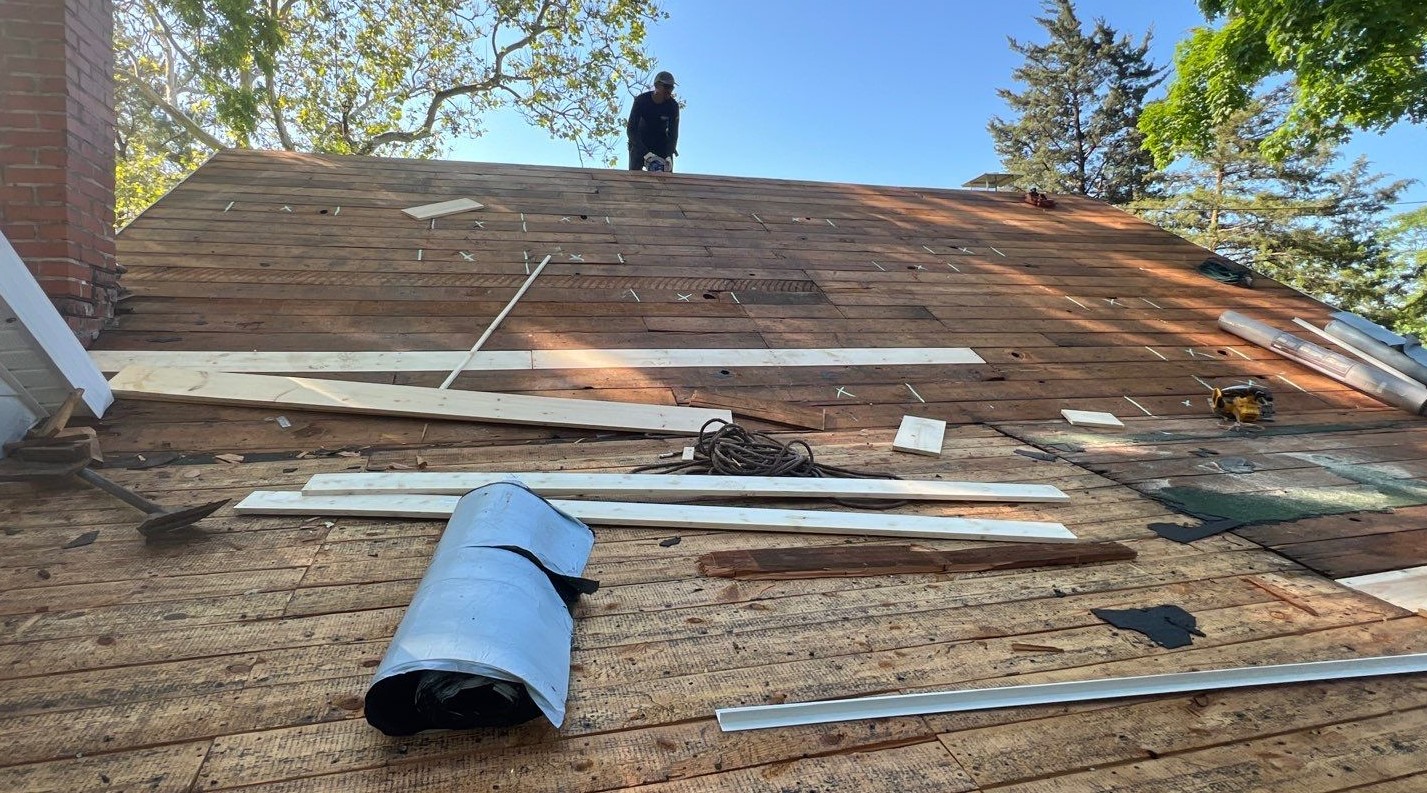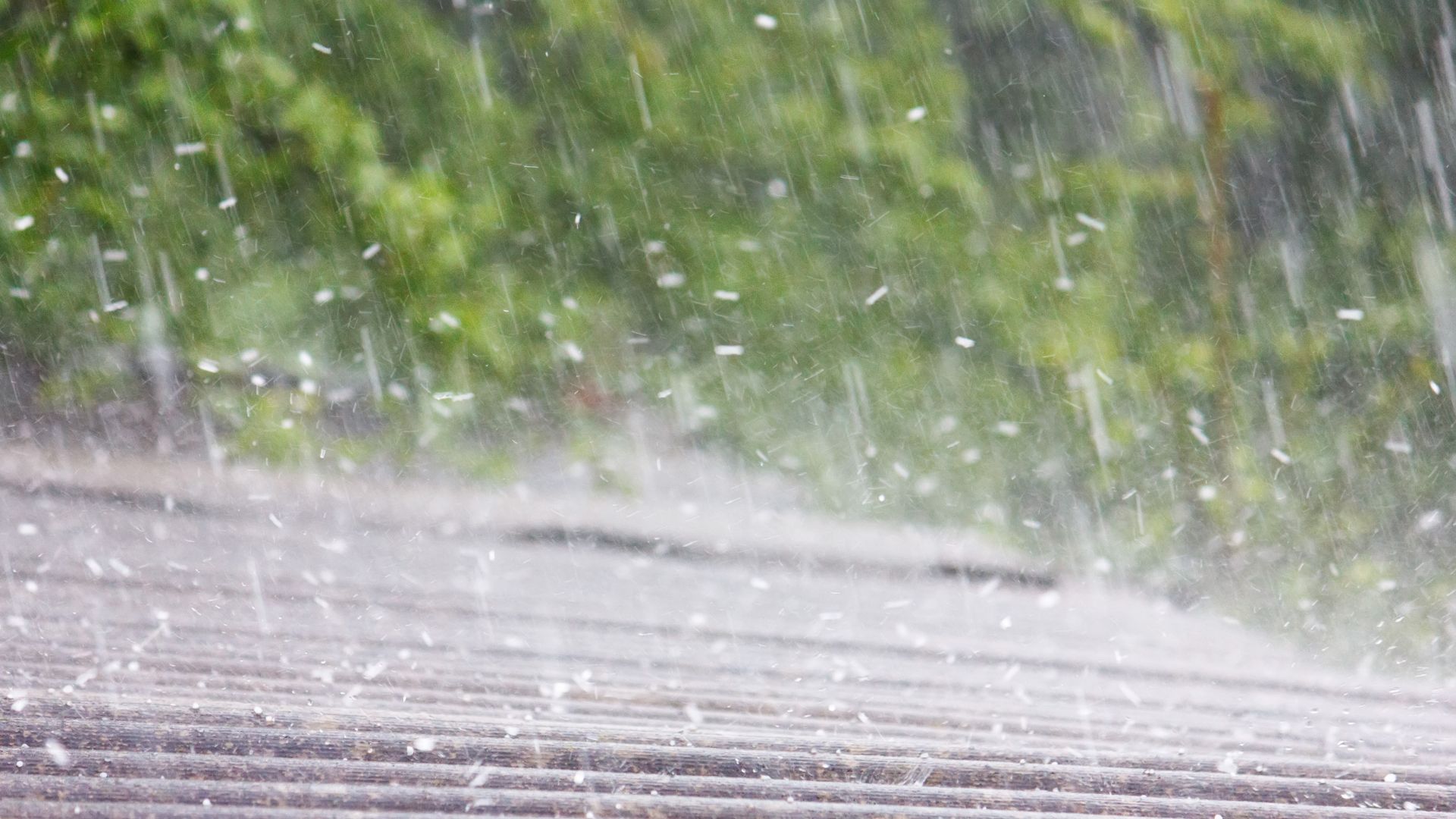Commercial flat roofing, a smart choice for many businesses and buildings, involves a roof with minimal slope. This kind of roofing not only holds up against the weather but also comes in handy for those looking to get more out of their building’s space.
With options like EPDM, TPO, asphalt, or even metal for low-slope situations, commercial property managers find an array of durable and energy-efficient solutions that match their needs.
The benefits are clear: flat roofs can save money over time and make rooftop spaces work harder by hosting HVAC systems without crowding the ground below. Plus, some materials last as long as 20 years! But it’s not all smooth sailing; challenges such as water leaks demand regular roof check-ups to keep problems at bay.
Cost-wise, it’s vital to understand that while something like an EPDM roof could set you back between $40,000 and $80,000 on a sizable 10,000 square foot area initially — depending on factors like climate — maintenance costs might creep up later.
Still savvy owners know these roofs have potential perks too; they turn into perfect spots for laying down solar panels or reflecting heat with special materials which slashes energy bills.
With plenty to consider from benefits to budget implications and choices in materials – we’re ready to lay out everything there is about commercial flat roofing. Let’s dig deeper!
Key Takeaways
- Flat roofs are a cost-effective, practical choice for commercial properties due to lower initial and long-term maintenance costs.
- They maximize space by allowing for additional functionality such as placement of HVAC units, creating rooftop gardens or installing solar panels on the roof surface.
- Proper installation and regular maintenance are crucial in preventing water penetration issues that can arise with flat roofing systems.
- There’s a wide range of materials like EPDM, TPO, asphalt, and metal that cater to different needs in terms of durability, energy efficiency, and budget considerations.
- While there are potential disadvantages such as water pooling concerns or higher up – front install costs compared to other options, these can be effectively managed through careful planning and expert installation.
Understanding Flat Roofing
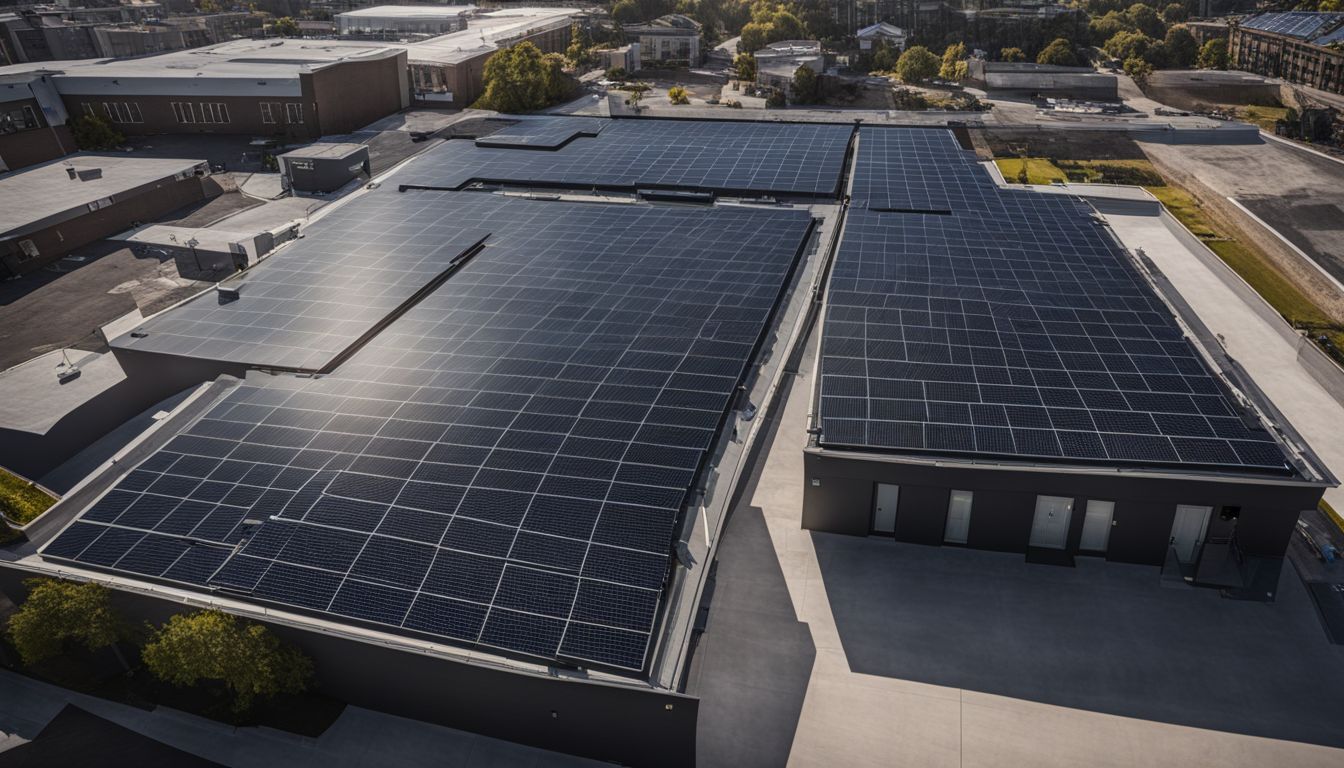
Flat roofs are popular on commercial buildings for good reasons. They provide a clean, horizontal surface that might seem simple, but there’s more to these roofs than meets the eye.
Unlike pitched roofs with their slopes and angles, flat roofing systems require precise installation to ensure proper drainage and prevent water pooling. The term “flat” is slightly misleading – they have a slight incline to manage water runoff effectively.
We choose high-quality materials like EPDM or TPO roofing because these membranes are durable and withstand extreme weather conditions well. These materials also allow for energy efficiency improvements such as solar panel installations which can greatly reduce energy bills over time.
And let’s not forget the additional outdoor space for HVAC units which would be hard to accommodate on sloped roofs. Moving forward, we’ll delve into how choosing a flat roof can translate into significant benefits for your property—especially when it comes to cost-effectiveness and space usage.
The Advantages of Commercial Flat Roofing
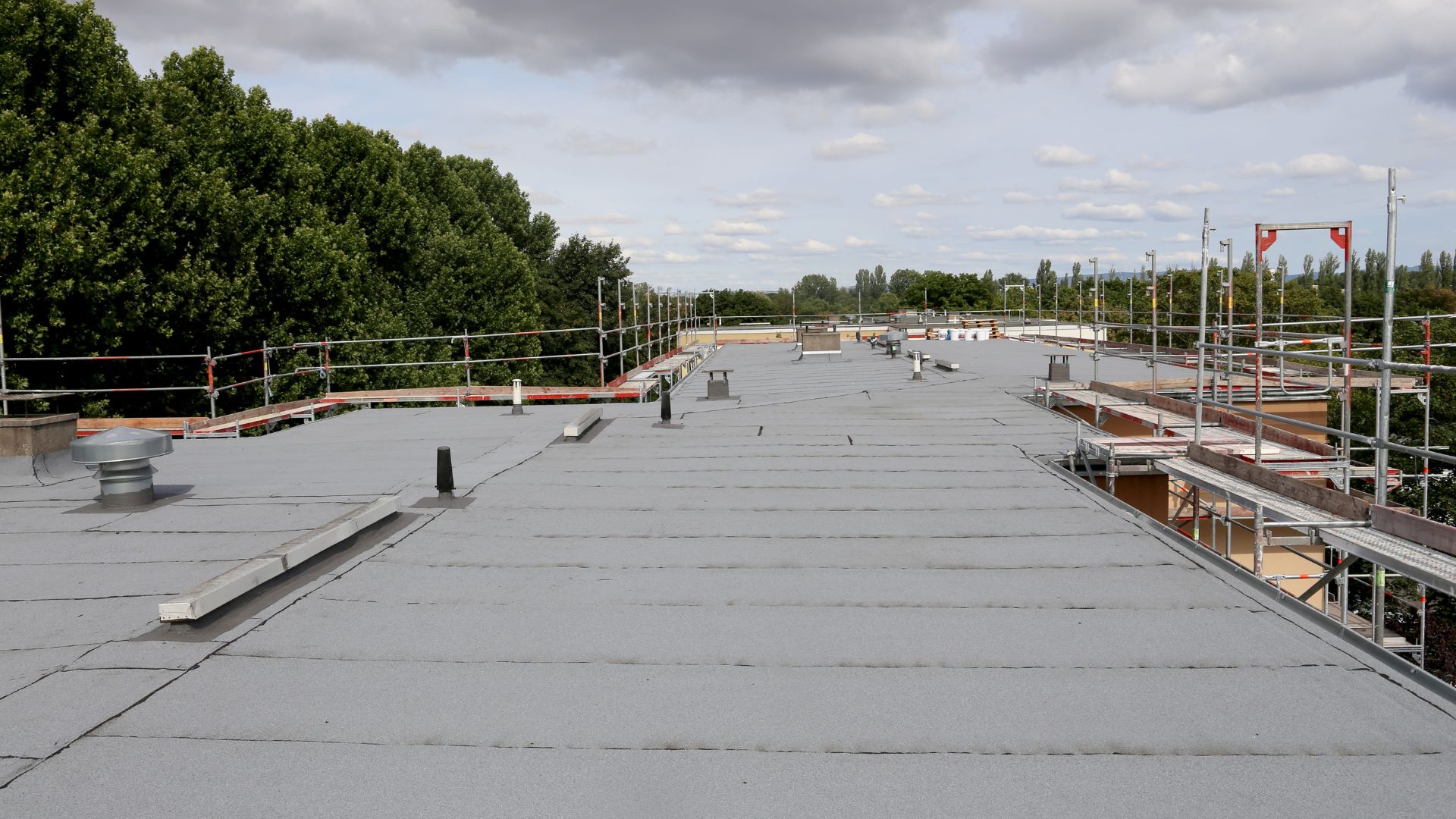
Commercial flat roofing offers several key advantages. These include cost-effectiveness, space maximization, and suitability for HVAC placement. Additionally, these roofs are easier to maintain and can contribute to energy efficiency.
Cost-Effectiveness
We know that everyone is looking for ways to save money without cutting corners. That’s why we always recommend considering a flat roofing system, especially for commercial properties.
They’re not only easier on the budget during initial installation but also in the long run with lower maintenance and repair costs.
Our experience shows that many large buildings, such as offices and schools, benefit immensely from flat roofs. With professional installation using quality materials like EPDM or TPO, these roofing systems become investments that keep overhead costs down.
This means more funds available for other property improvements or business operations.
Opting for a flat roof could be a smart financial move. They require less material and labor than sloped roofs and are simpler to inspect and maintain, which contributes greatly to their cost-effectiveness.
Plus, they can enhance energy efficiency by accommodating rooftop gardens or solar panels, leading to significant savings on heating and cooling expenses over time.
Space Maximization
Maximizing space is a game-changer for commercial properties, providing ample room for essential equipment and storage without compromising the building’s footprint. Think of it as turning the top of your building into valuable real estate.
By opting for flat roofing, you create an extra layer of usable space where HVAC systems can reside, freeing up more area on the ground level for operations or parking.
Consider this: the roof is no longer just a cover over your head but also a strategic asset that can be leveraged to enhance your business’s functionality. This approach fits perfectly with urban environments where every square inch counts.
Moving on from Space Maximization, let’s delve into how HVAC placement becomes more viable with flat roofing options.
Ideal for HVAC Placement
Flat roofs are perfect for placing HVAC units, providing convenient and accessible locations for commercial buildings. This placement removes the need for bulky ground units, freeing up valuable space and improving accessibility.
With no slopes or angles to restrict useable areas, flat roofs offer optimal room for positioning HVAC systems, making them a practical choice for property managers seeking efficiency and convenience.
Furthermore, the ample space on a flat roof allows residential homeowners and commercial property managers to maximize their usable area without compromising aesthetics or functionality.
Easier Maintenance
Flat roofing systems offer the advantage of easier maintenance compared to sloped roofs. Accessibility is key when it comes to maintaining and repairing flat roofs, resulting in lower overall maintenance costs.
With a flat roof, inspection and cleaning can be done more efficiently, reducing the need for extensive repairs over time. As per important facts, modified bitumen flat roofs require less maintenance and can stand on their own for a long period of time.
Additionally, due to their accessible nature, regular inspections and minor repairs are less likely to be overlooked. This ease of access also allows for swift attention to any issues that may arise, preventing them from escalating into larger problems later on.
Energy Efficiency
Flat roofs are energy efficient as they absorb less heat than other roofing systems, reducing energy costs for residential homeowners and commercial property managers. The reflective materials used on flat roofs can significantly decrease heat absorption, enhancing their energy efficiency.
This is beneficial not only for the environment but also for lowering utility bills. Furthermore, the spacious nature of flat roofing provides notable benefits such as accommodating mechanical equipment and offering space utilization for solar panels and rooftop gardens, which further contribute to improved energy conservation.
Notably, the availability of ample space on flat roofs supports cost-effective placement of HVAC units while optimizing overall building energy efficiency. Additionally, when designed correctly with appropriate insulation and ventilation systems in place, flat roofs can effectively mitigate excessive heat buildup during warm weather seasons.
The Disadvantages of Commercial Flat Roofing
While commercial flat roofing offers numerous benefits, it also comes with its own set of disadvantages. These include the potential for water penetration, the cruciality of proper installation, and possible cost implications that may arise over time.
Potential for Water Penetration
Flat roofing comes with the potential for water penetration, which necessitates diligent maintenance to mitigate this risk. The lack of slope in flat roofs can lead to water pooling and drainage issues, increasing the likelihood of leaks.
Due to this vulnerability, it’s essential for residential homeowners and commercial property managers alike to prioritize regular inspections and proper maintenance practices to prevent water damage.
PVC membranes are a popular choice for flat roofing due to their durability. However, it is crucial that these membranes be installed and maintained correctly to ensure protection against potential water penetration.
Cruciality of Proper Installation
Proper installation of commercial flat roofing is paramount in preventing water penetration issues that may plague the building, similar to those experienced with pitched roofs. This crucial step ensures the cost-effectiveness and timely completion of the project, safeguarding against potential challenges for commercial property owners.
The right installation techniques are essential to maximize space utilization and usability for commercial properties, emphasizing why proper installation is vital for a budget-friendly and practical choice.
The importance of expertly installing commercial flat roofing cannot be overstated; it guarantees longevity, functionality, and peace of mind for both residential homeowners and commercial property managers.
This fundamental factor shapes the success of the roofing system’s performance throughout its lifespan, making it imperative to engage professional installers equipped with industry expertise and proven track records to oversee this critical phase effectively.
Possible Cost Implications
Transitioning from the importance of proper installation, it’s crucial to consider the possible cost implications associated with commercial flat roofing. The initial investment for a flat roofing system may vary based on factors like material choice, size of the building, and installation complexity.
For instance, the average cost to install an EPDM roof is estimated between $4.00 and $8.00 per square foot or approximately $40,000 to $80,000 for a 10,000 square foot area. It’s important for property managers and homeowners to factor in not only the initial installation costs but also ongoing maintenance expenses when budgeting for a flat roofing system.
Considering flat roofs can be more expensive to maintain depending on factors like building size and weather conditions, property managers should carefully assess their long-term financial commitment before selecting a flat roof option.
Options for Commercial Flat Roofing
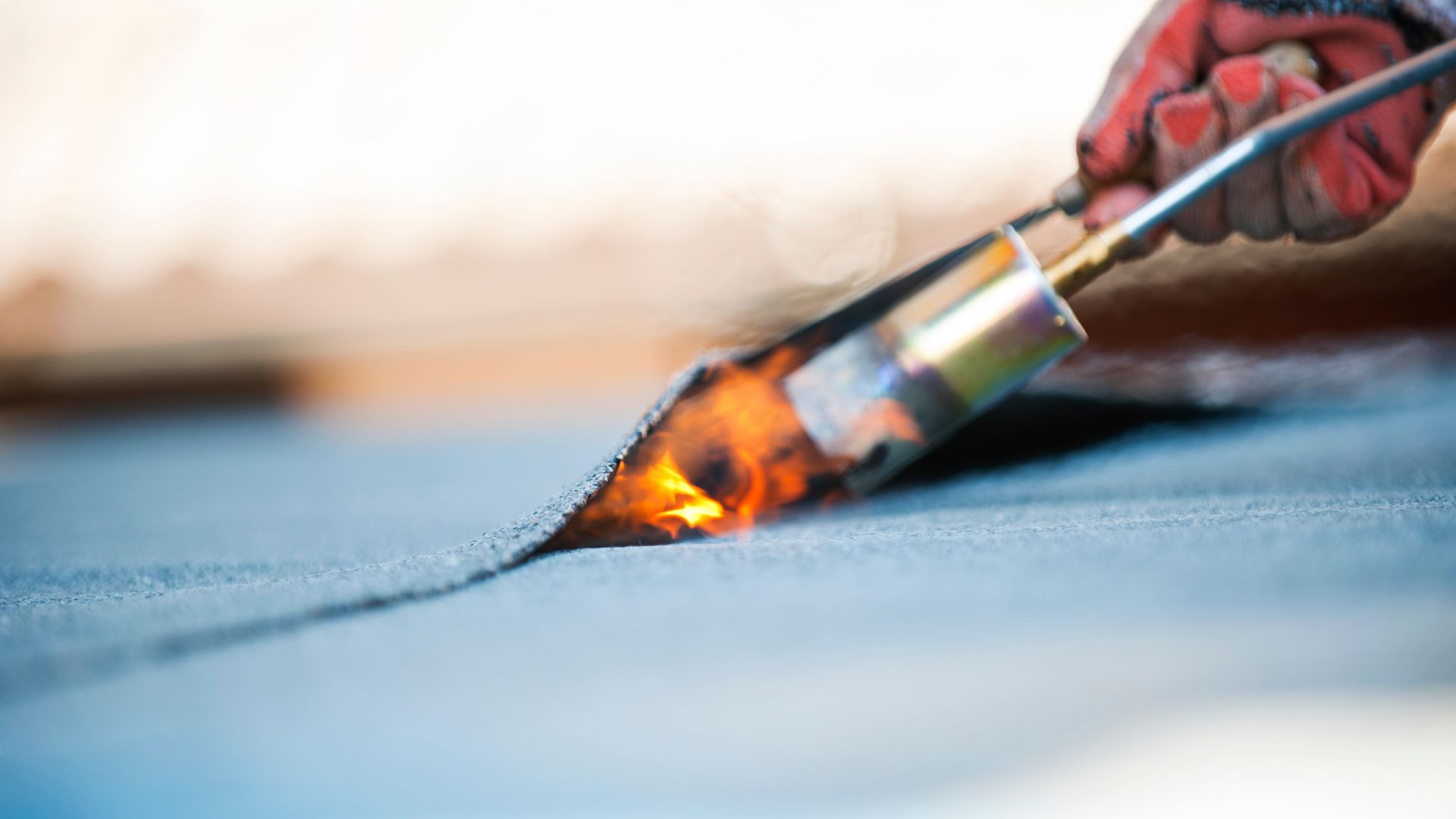
When it comes to commercial flat roofing, there are several options to consider, including EPDM, TPO, asphalt, and metal. Each option has its own benefits and installation process that can best suit your specific needs.
Interested in learning more about the ideal roofing option for your commercial property? Keep reading!
EPDM (ethylene propylene diene terpolymer)
EPDM (ethylene propylene diene terpolymer) is a robust synthetic rubber membrane widely used in commercial flat roofing. It boasts exceptional resistance to impact, abrasion, and weathering, making it a durable and resilient option for flat roofing systems.
This cost-effective material offers long-term protection for commercial properties while being derived from sustainable sources like oil and natural gas – it stands out as an eco-friendly choice.
With its affordability, durability, and eco-friendly nature, EPDM has firmly established itself as a preferred solution for commercial flat roofing.
TPO (thermoplastic polyolefin): Benefits and Installation Process
We’ve discussed the benefits and installation process of EPDM roofing, now let’s delve into the advantages and features of TPO roofing for your commercial property or residential home. Here’s what you need to know:
- Cost-Effectiveness: TPO membranes are a budget-friendly option compared to other roofing materials, making it an attractive choice for property owners looking for durable yet affordable solutions.
- Energy Efficiency: TPO roofing offers excellent energy-saving benefits, providing a cool roof surface that reflects solar heat, resulting in lower air conditioning costs during warmer months.
- Durability and Longevity: Properly installed TPO roofing can last between 10-20 years, offering reliable protection against weather elements and maintaining its strength and integrity over time.
- Quick Installation: The relatively uncomplicated installation process of TPO roofing makes it a convenient choice for commercial properties looking for efficient solutions with minimal disruption.
- Color Options: TPO membranes come in various colors, allowing property managers or homeowners to select an option that complements the overall aesthetics of their building while reaping the benefits of TPO roofing’s functionality.
- Strength and Resistance: TPO membranes exhibit strength and resistance against punctures, tears, and impact damage, providing reliable protection for your property against potential structural vulnerabilities.
- Environmental Benefits: The sustainability factor of TPO membranes aligns with green building initiatives, making it an environmentally conscious choice for those seeking eco-friendly roofing materials.
Asphalt
Asphalt roofing is a durable and cost-effective option for commercial flat roofs. It offers exceptional performance at a moderate cost, making it an attractive choice for both residential homeowners and commercial property managers.
Asphalt BUR (built up roof) stands out as one of the most inexpensive options for flat roofing systems, providing reliable protection against the elements.
With mastic asphalt, a mix of materials like aggregate, sand, limestone, bitumen, and additives come together to create a robust roofing solution. However, it’s important to note that some types of asphalt roofing cannot be installed over flat roofs due to specific characteristics.
Metal
Transitioning from discussing asphalt as a commercial flat roofing option, metal roofing systems are a popular and practical choice for various commercial flat roofs due to their numerous advantages.
Metal roofs offer longevity, durability, heat resistance, and can withstand high winds while being largely impact-resistant. They are commonly constructed using materials such as steel, aluminum, and copper.
In particular, they are known for their fire resistance and low maintenance requirements.
Conclusion
In conclusion, commercial flat roofing offers numerous benefits and a variety of options for property owners and managers. The cost-effectiveness, space maximization, and energy efficiency make it an attractive choice for many.
While water penetration is a potential issue, proper installation and maintenance can mitigate this risk. Consider EPDM, TPO, asphalt, or metal roofing options to find the best fit for your commercial property.
FAQs
1. What are the advantages of commercial flat roofing?
Commercial flat roofing, often made with durable materials like EPDM or PVC, provides excellent protection against water and is energy-efficient. It’s also easier to install air-conditioning units and green roofs on these flat surfaces.
2. Can different materials be used for commercial flat roofing?
Yes, various materials such as EPDM (ethylene propylene diene monomer), PVC (polyvinyl chloride), built-up roofing (BUR) systems, modified bitumen membranes, and thermoplastic polyolefins are available options for commercial flat roofing.
3. What should I consider when selecting a roofing material?
Consider factors like durability, waterproofing abilities, insulation properties—like expanded polystyrene or fiberglass—and energy efficiency when choosing a material for your roof installation.
4. How does proper drainage protect my commercial flat roof?
Installing an effective drainage system prevents water accumulation that could compromise your roof structure; Cox Roofing Systems can aid in implementing robust solutions to manage stormwater efficiently.
5. Will regular maintenance extend the life of my commercial flat roof?
Absolutely! Scheduling routine inspections with professional roofing contractors ensures any problems such as leaks or compromised vapor barriers are fixed promptly; this keeps your membrane airtight and extends the lifespan of your roof coatings.
6. Are there eco-friendly options for commercial flat roofs?
Certainly! Green roofs use vegetation to manage water vapor while improving energy-efficiency. Options like reflective paint applied over the surface help reduce the flow of heat into buildings as well.
Contact Us
After starting his first business at age 26, Artie Hendricks partnered with his best friend Rob Calhan and they have assembled a team of skilled and conscientious friends to be the core of Landmark Roofing. He largely credits his father’s strong and consistent work ethic and his father’s best friend Jerry, who owns a construction company and trained him through his first building experiences. Artie has since advanced through degrees in architecture, auto-CAD and construction management to build a business that prides itself on the care it shows for its work and its customers’ satisfaction.


